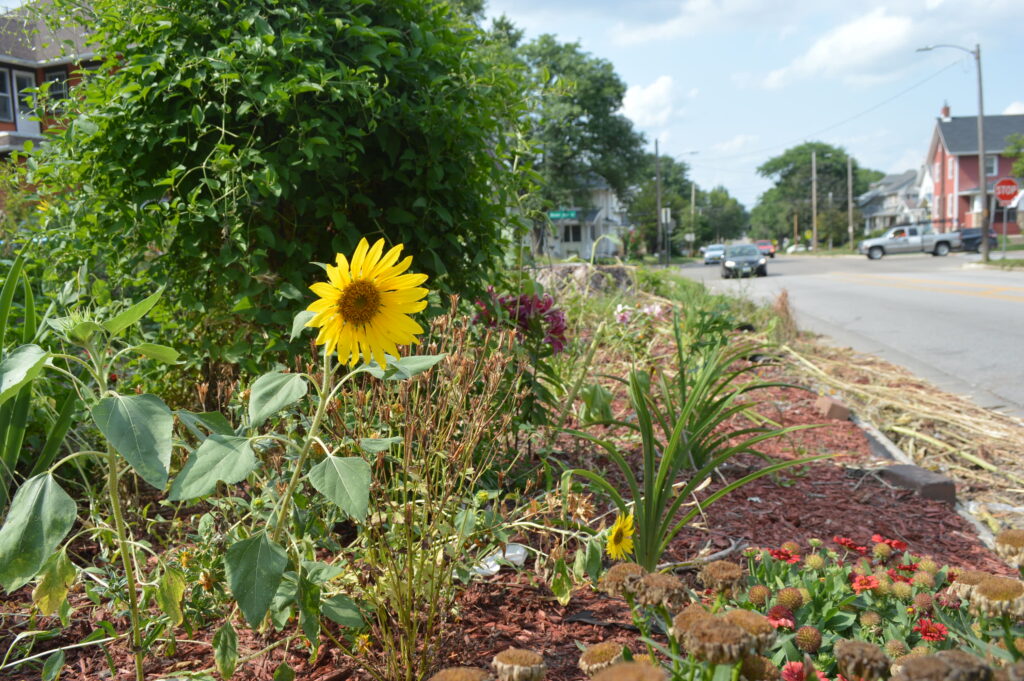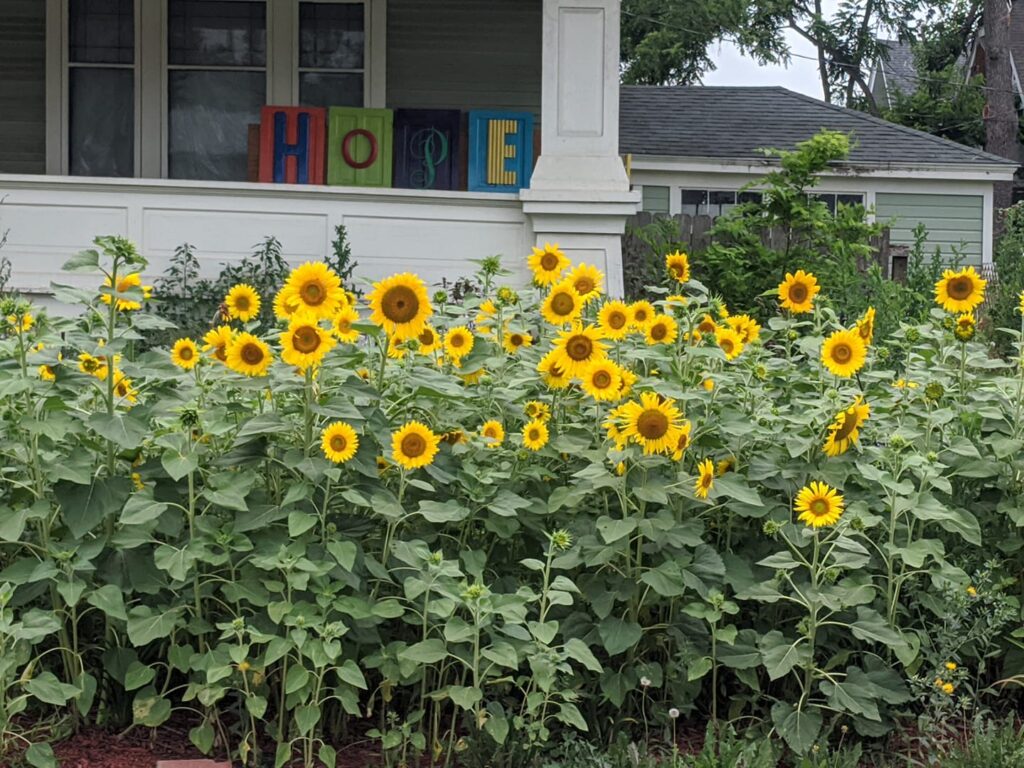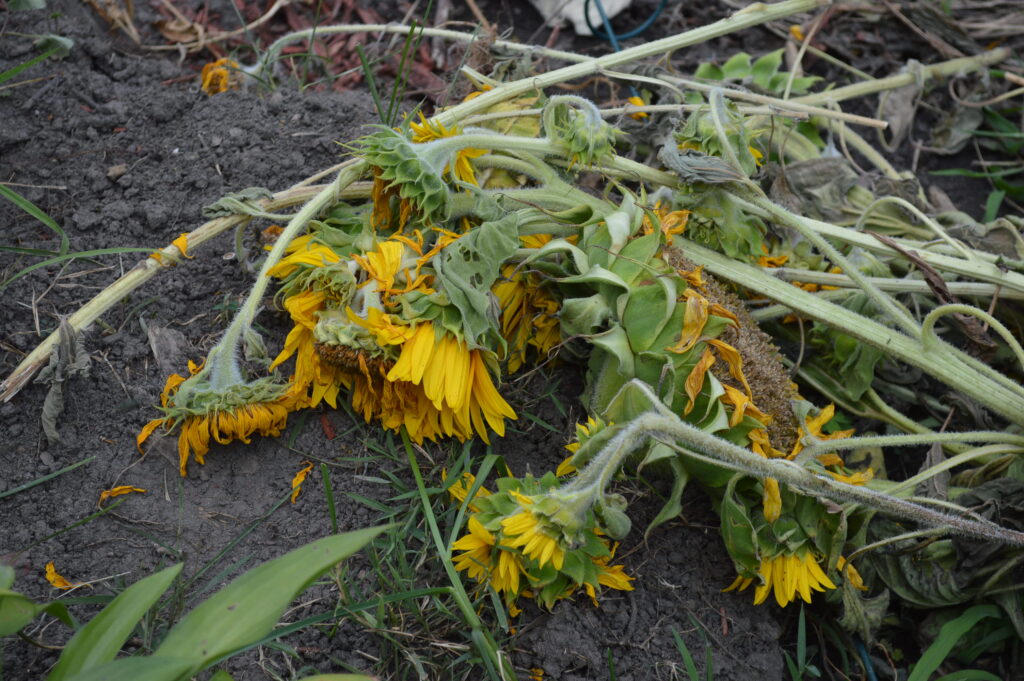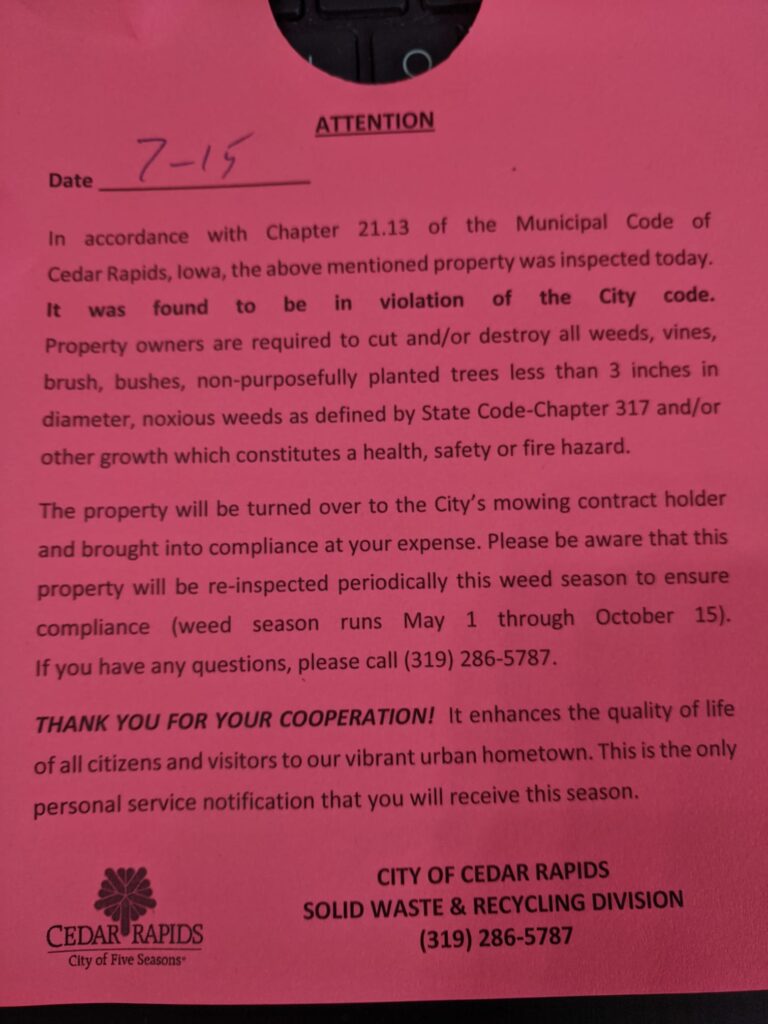
UPDATE July 20, 2021, with comments from Roy Hesemann, utilities director for the city of Cedar Rapids.
By Cindy Hadish
CEDAR RAPIDS – Tara Farris worked hard to turn blight into beauty after Iowa’s hurricane-strength derecho downed one of the trees in front of her house and the city removed the other.
As Farris and her husband continue to repair their Wellington Heights home nearly one year after the unprecedented storm, she was forced to turn her attention to undoing what had been a bright spot in the aftermath.
The city of Cedar Rapids ordered her to remove the sunflowers she had planted to fill in where the trees had been after an anonymous person filed a nuisance complaint.
More: Cargill cuts path of destruction through Prairie Pollinator Zone

“It was a weed-torn grassy area,” Farris said of the city right-of-way in front of her home after the August 2020 derecho. “I knew there were better things I could put in here. The grass doesn’t provide anything.”
So she planted a variety of native plants that are beneficial to bees and other pollinators, along with lillies, roses, herbs and more to brighten the devastated area.
Then there were the sunflowers, in the middle of the makeshift garden, planted back far enough to seemingly cause no issues.

But one person complained that the sunflowers obstructed the view from an alley and the city agreed, sending Farris a letter, quickly followed by a violation notice.
Farris was threatened with a $141 fine, plus fees if city workers were sent to remove the sunflowers if she didn’t comply.
So, late last week, Farris pulled out the bright yellow sunflowers before city crews were sent to her home.
“There are derelict houses; people stealing things,” she said. “There are so many worse things in this neighborhood.”
Related: Cedar Rapids man ordered to remove garden
Roy Hesemann, utilities director for the city of Cedar Rapids, said the $141 charge would be an administrative fee.
An additional charge would be based on the square footage of the area needing abatement, Hesemann wrote in an email. “We maintained contact with the homeowner with the goal of not needing to charge any fines or fees.”
Hesemann noted that nuisance abatement is a complaint-driven process. “Abatement staff respond to right-of-way concerns as complaints are filed. In this case, you may refer to Chapter 9.20 (e) Shrubbery Blocking View, 9.20 (f) Assessment, 21.13 (b) Maintenance of Parking and Private Property, and Chapter 22 Nuisances regarding our enforcement action.”
Ironically, the towering trees that were planted when the house was built 110 years ago obstructed the view more than the short sunflowers, Farris said, but no one ever complained about them.
Stumps left behind showed one of the trees – an oak – had been rotted from within, while the maple that Farris would have kept appeared in good condition.
“I loved your flowers,” a driver shouts as her truck passes Farris outdoors in front of her home.
Many neighbors and even a City Council member have commented on the beauty of the flowers, Farris noted.
“I have a lot of support,” she said, but it wasn’t enough to stop the city’s nuisance process.

A large bush obstructs the view of motorists at the other end of the alley. Homeowners throughout the city have planted sunflowers and other plants to fill the void where thousands of trees were downed by the derecho.
But only select homeowners are targeted because the city issues nuisance violations on a per-complaint basis.
Farris believes she knows the neighbor who complained, as the woman frequently calls the city against other neighbors and even follows her as she takes her dog for a walk.
Pointing to work still underway on her house and yard, Farris said the violation notice was the final straw.
“It’s hard enough taking care of an older house without someone hindering what you’re trying to do,” she said. “I wanted to do so much, but I’m tired of being harassed by her.”
She and her husband decided to move out of Cedar Rapids, possibly to Anamosa, and have put their home on the market. Farris is torn about the decision, as her son has friends at school and in the neighborhood.
“Anamosa is quieter,” she said. “And I don’t think I’ll have any problems planting flowers there.”
More: Good Neighbor Iowa points to high costs of “perfect” lawn
See the nuisance violation issued to Tara Farris:


There were NO NOXIOUS WEEDS, and BTW, many people intentionally plant “… vines, brush and bushes…” Milkweed is not noxious and it is NOT poisonous, particularly if you are a Monarch butterfly! I guess the city managers and councilman and women don’t know the difference between poison ivy or clematis; both are vines, and that all those two have in common. Butterflies, birds and bees love flowers even those that the city seems to think or ‘noxious’. I would prefer to city be a bit more clear on what they consider NOXIOUS!!
Thank you for your comment, Karmen. Agreed on the noxious weeds. The city claims the view from the alley was obstructed, but as pointed out in the article, it appears to be a neighbor who targeted this family, rather than an actual safety issue.
I heard about this on the news at the time, but there were no details. My first thought was that whoever complained got used to being able to see the alley while pulling out and didn’t like not being able to see again. Bummer that it was a nit-picky neighbor bent on making other people’s lives miserable.
[…] Related: Cedar Rapids threatens derecho victim with fine, fees […]